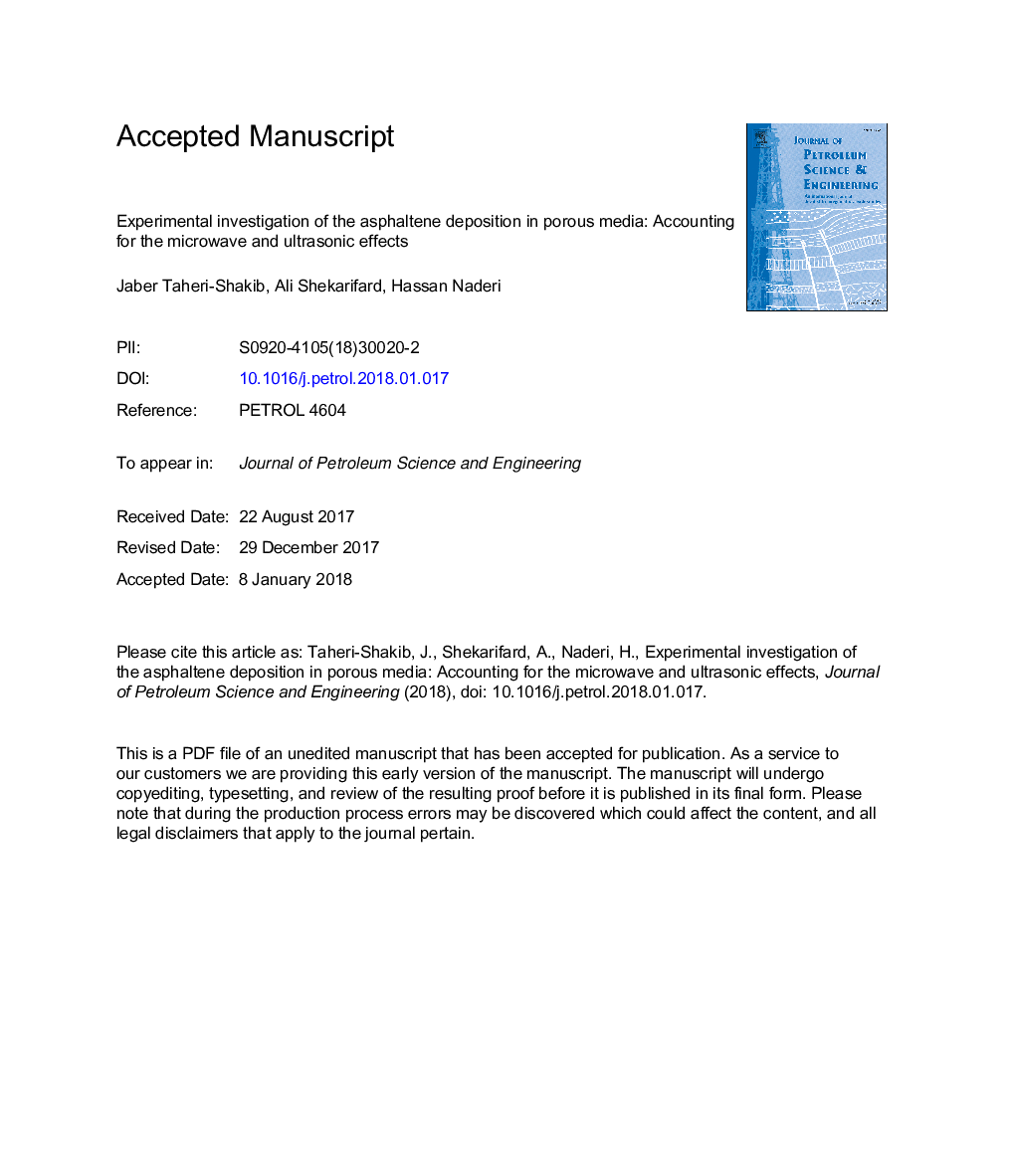| Article ID | Journal | Published Year | Pages | File Type |
|---|---|---|---|---|
| 8125317 | Journal of Petroleum Science and Engineering | 2018 | 27 Pages |
Abstract
This study examines the effects of ultrasonic waves (US) and microwaves (MW) on the permeability in carbonate cores with different permeabilities of asphaltenes deposited therein. Using US with toluene injection restores permeability in cores with a permeability of less than 20 md, about 18.8% and 29% higher than injection of toluene without US. The US creates turbulence and cavitation, causing a change in the structure of the asphaltene conglomerations deposited in the cores. These structural changes may be due to increased levels of contact between precipitates and better penetration of the injected fluid which facilitate the process of removing them from the cores. MW, in addition to changing the structure of asphaltene clusters within the cores, reduces the amount of their polar elements, including sulfur (S), nitrogen (N), and oxygen (O). Under MW irradiation, the sulfur, nitrogen, and oxygen values were 23.5%, 18.4% and 48%, respectively. This decrease in the amount of asphaltene polar elements, which is due to their high capacity to absorb MW can reduce the negative charges in asphaltene particles. The zeta potential results also indicated that the negative charges of asphaltene particles decreased and became more positive as a result of MW radiation (from â12.31Â mV to â7.59Â mV). Fourier transform infrared spectroscopy (FTIR) spectra tests also confirmed these results. The polar bands of the asphaltene particles deposited inside the cores (OH, S-H; C=O) had a decreasing trend and escaped from the structure of the asphaltene clusters. Decreasing the polar values, especially those of the compounds with negative electrical charge (SO) actually reduces the adhesive force between asphaltene and limestone that has positive electrical charges. This phenomenon causes the removal of asphaltene particles from the porous rock media. The rate at which permeability is restored also indicates that MW radiation is much higher than the previous one (USÂ +Â Toluene), especially cores with low permeability. The results of this study could be a major step towards removing asphaltene precipitates in oil reservoirs using US and MW technologies.
Related Topics
Physical Sciences and Engineering
Earth and Planetary Sciences
Economic Geology
Authors
Jaber Taheri-Shakib, Ali Shekarifard, Hassan Naderi,
